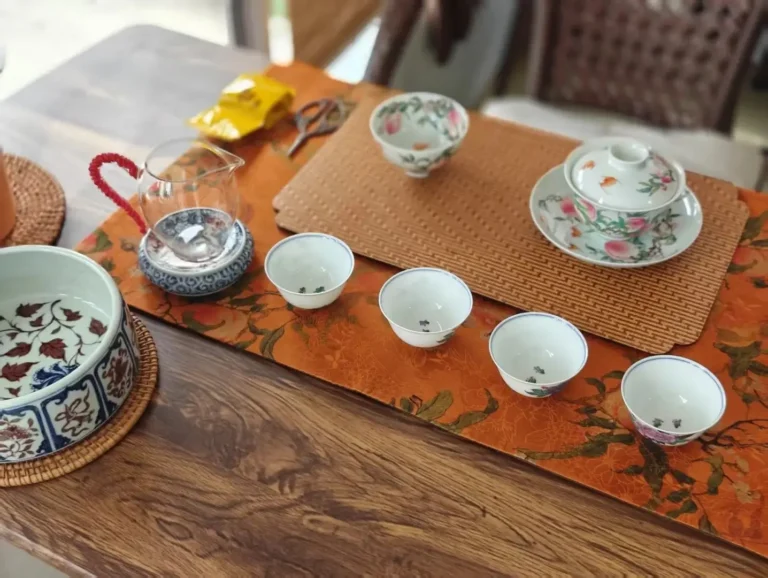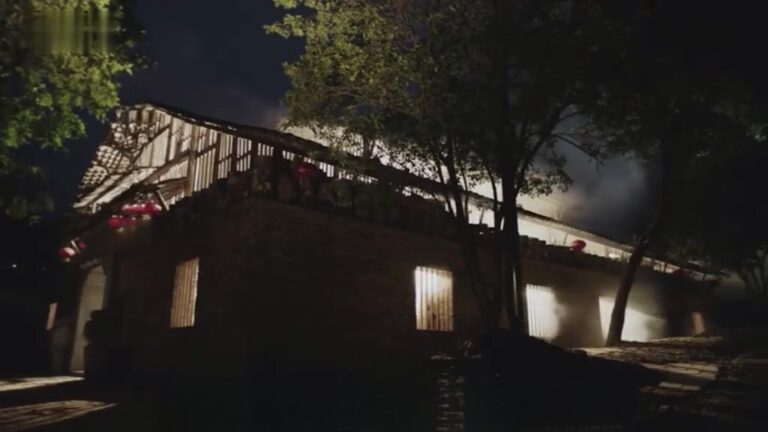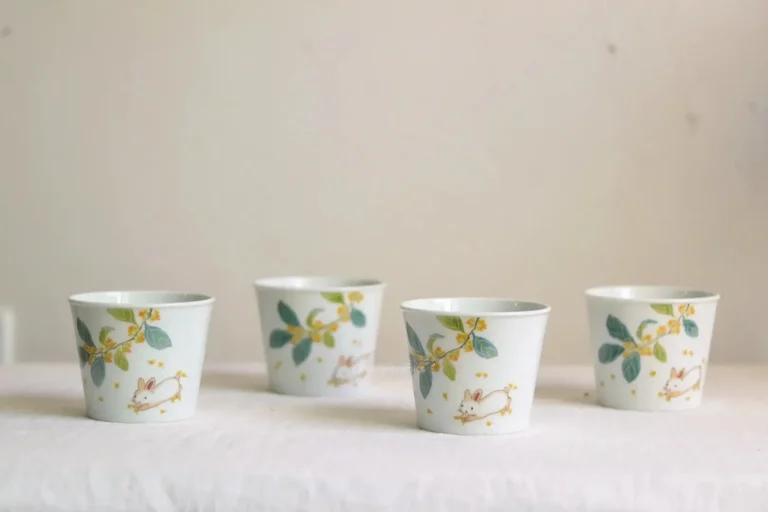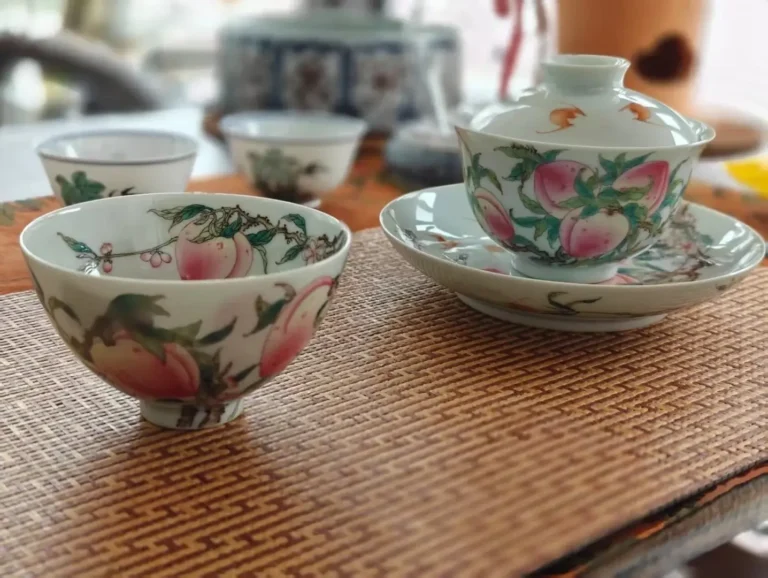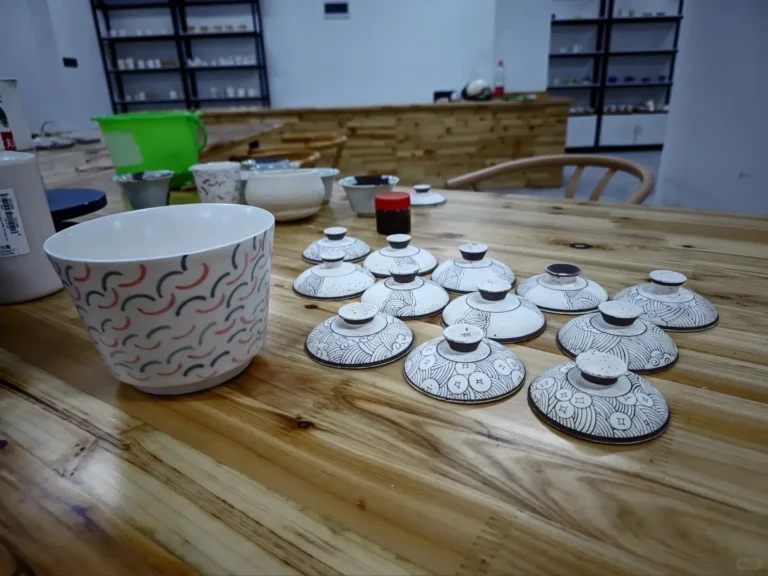Overglaze vs Underglaze
Author: Yuan Taose Commune
Overglaze vs. Underglaze are two traditional porcelain decoration techniques, each featuring distinct processes and effects. Next, let’s take a closer look at their differences and characteristics.
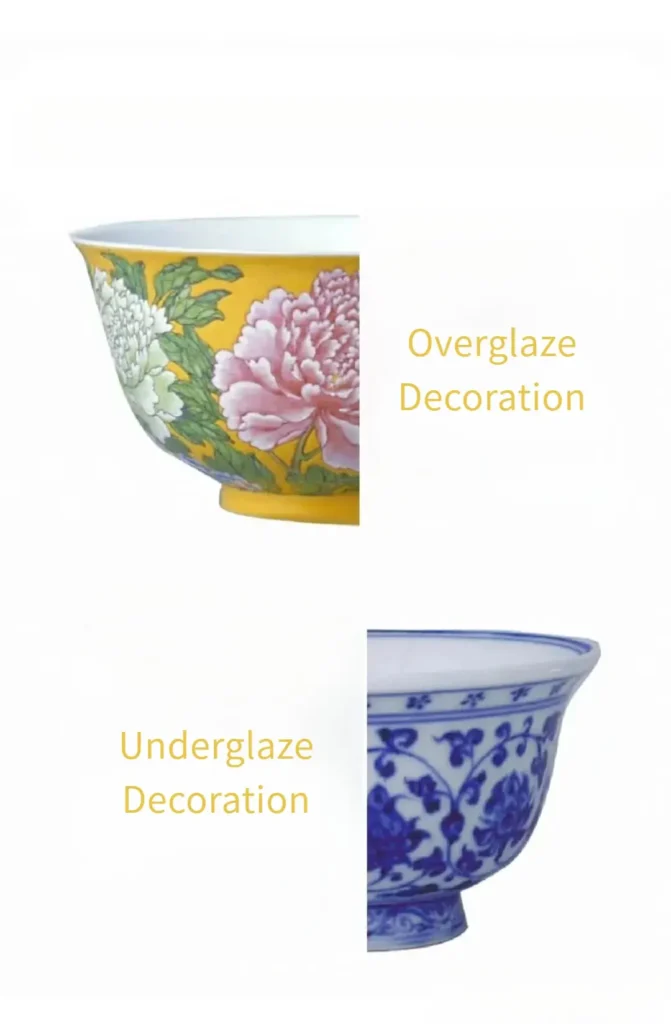
Overglaze Decoration
Overglaze decoration refers to the technique of painting designs onto the already-fired and glazed surface of porcelain. After the decoration is applied, the piece is fired again at a lower temperature, typically between 600–900°C. Since the pigments do not fuse with the glaze layer, the patterns stand out from the surface, creating a slightly raised texture that can be felt to the touch.
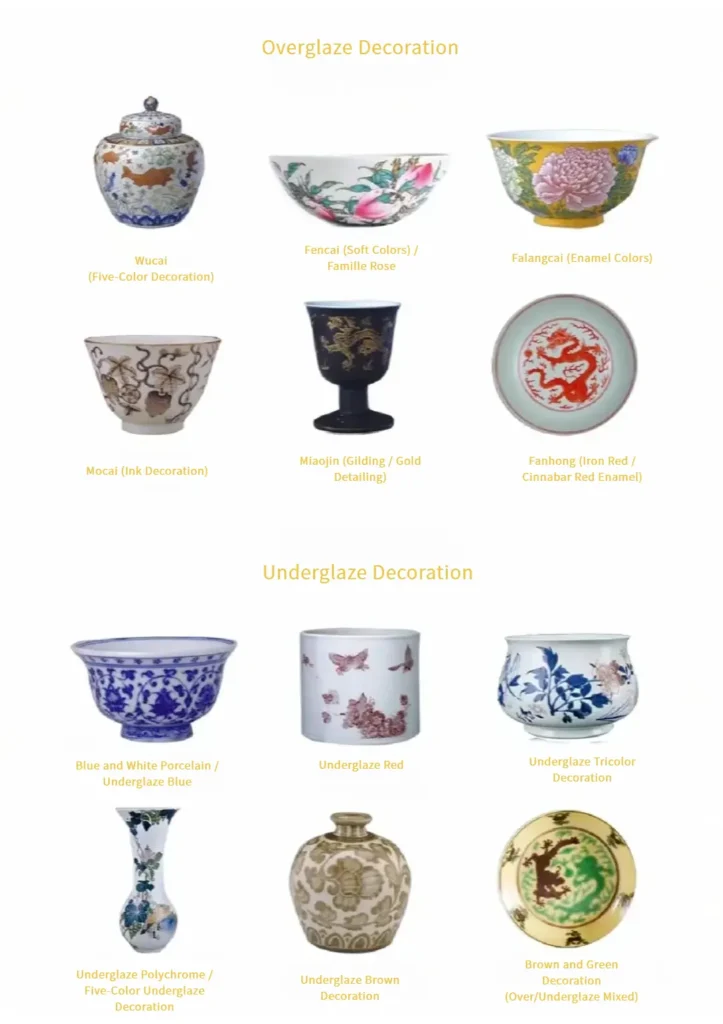
Underglaze Decoration
Underglaze decoration involves painting patterns directly onto the dried, unfired ceramic body using mineral pigments. After the decoration is completed, a layer of clear or lightly colored glaze is applied over the surface, and the piece is then fired in a single high-temperature process. The finished design lies beneath the transparent glaze layer, giving the surface a smooth, glossy, and refined finish. The decoration does not protrude, resulting in a delicate, luminous appearance.
1. (Wucai)
Wucai (Five-Color Decoration)
“Wucai” combines underglaze blue with overglaze enamels in multiple colors, creating vivid and lively patterns.
2. (Fencai)
Fencai (Soft Colors) / Famille Rose
Fencai, also known as “Famille Rose,” features soft pastel tones and fine brushwork, often used for elegant floral and figure motifs.
3. (Falangcai)
Falangcai (Enamel Colors)
Falangcai refers to enamel-painted porcelain, developed in the Qing court using European techniques, prized for its brilliance and rarity.
4. (Mocai)
Mocai (Ink Decoration)
Mocai employs monochrome ink-style painting on porcelain, echoing traditional Chinese ink wash aesthetics.
5. (Miaojin)
Miaojin (Gilding / Gold Detailing)
Miaojin refers to the use of gold detailing on porcelain, adding a luxurious and regal touch to the design.
6. (Fan Hong)
Fanhong (Iron Red / Cinnabar Red Enamel)
Fanhong features iron-red overglaze decoration, offering a bold, warm red tone often used in contrast with blue or pastel elements.
7.(Qinghua)
Blue and White Porcelain / Underglaze Blue
Qinghua, or blue and white porcelain, features underglaze cobalt-blue designs fired at high temperatures, known for its timeless elegance and global appeal.
8. (Youlihong)
Underglaze Red
Youlihong employs copper-based red pigments under the glaze, fired at high temperatures. Its rich crimson tones are prized but challenging to achieve consistently.
9. (Yousan Cai)
Underglaze Tricolor Decoration
Underglaze tricolor involves painting designs using three underglaze pigments—typically blue, brown, and yellow—creating a harmonious effect after a single firing.
10. (Youwu Cai)
Underglaze Polychrome / Five-Color Underglaze Decoration
Underglaze polychrome (Youwu Cai) features intricate designs using five or more underglaze pigments, all fused beneath a transparent glaze in a single firing.
11. (Youxia Hecai)
Underglaze Brown Decoration
Underglaze brown uses iron-based pigments to create earthy, subtle patterns under the glaze, often in landscapes or calligraphy-inspired motifs.
12. (He-Lü Cai)
Brown and Green Decoration (Over/Underglaze Mixed)
*He-Lü Cai combines brown and green pigments—sometimes with underglaze brown and overglaze green—to create a vivid contrast of tones and textures.
Overglaze Decoration
Overglaze decoration refers to the technique of painting on the already-glazed and fired ceramic surface using colored enamels. The piece is then fired again at a lower temperature (600–900°C).
Since the pigments do not fuse with the glaze, the painted designs sit atop the surface, often resulting in a slightly raised texture that can be felt by touch.
In-glaze Decoration
In-glaze decoration is applied in the same way as overglaze painting, but the firing temperature is much higher (around 1100–1260°C). During firing, the pigments melt slightly and sink into the glaze layer, which seals over them upon cooling.
The result is a smooth, lustrous, and glassy surface with colors that appear embedded, offering durability and resistance to wear and corrosion—visually similar to underglaze decoration but technically distinct.
Underglaze Decoration
Underglaze decoration is created by painting designs directly onto the unfired, dried clay body using pigments (commonly cobalt blue, copper red, etc.). The piece is then covered with a transparent or lightly colored glaze and fired once at high temperatures.
The final decoration is sealed beneath the glaze, giving it a soft, smooth, and glossy finish. The patterns are flat to the touch and protected by the glaze, contributing to their durability and clarity.
| Decoration Type | Advantages | Disadvantages |
|---|---|---|
| Overglaze Decoration | – Wide range of colors (dozens to over a hundred). – Easy to apply and correct mistakes without damaging the ceramic. – Allows diverse techniques (brush, spray, finger painting). – Enables highly detailed and layered designs. | – Prone to fading, abrasion, and damage from acids/alkalis. – Low-temperature firing may release harmful heavy metals. – Not recommended for food-contact surfaces. |
| In-glaze Decoration | – Lead-free and non-toxic, safe and environmentally friendly. – Colors sealed within glaze, resistant to wear and corrosion. | – Relatively expensive production due to high firing temperatures. – Rarely used for decorative artware due to cost. |
| Underglaze Decoration | – Patterns highly durable, unaffected by normal use or chemical reactions. – Colors protected under glaze, long-lasting clarity. | – Difficult to achieve delicate layering and complex colors. – Design may differ from final product causing wastage. – Corrections difficult, risk deformation. |
Overglaze Decoration Originated in the Ming Dynasty
Overglaze decoration is applied by painting colored enamels onto the glazed surface of already fired ceramics. The piece is then fired again at a lower temperature between 600°C and 900°C.
This technique creates a slightly raised texture on the surface, resulting in vibrant and vivid colors with a tactile feel.
In-glaze Decoration: Originated in the Ming Dynasty
This technique involves high-temperature firing between 1100°C and 1260°C, allowing pigments to penetrate into the glaze layer. After cooling, the glaze seals the colors inside.
The result is a delicate, translucent, and glossy surface that is visually appealing, corrosion-resistant, and wear-resistant.
Overglaze vs Underglaze:Underglaze Decoration Originated in the Ming Dynasty
Patterns are painted directly onto the shaped, unfired clay body, then covered with a white transparent or other light-colored glaze.
The piece is fired once at high temperature, producing a smooth, flat surface with colors that appear bright, translucent, and deeply infused beneath the glaze.
| Method | Overglaze Decoration | In-glaze Decoration | Underglaze Decoration |
|---|---|---|---|
| Appearance | Fuzzy or uneven edges; thin glaze; simple colors | Smooth glaze with some color blending; looks like ink wash painting | Fuzzy edges; simple colors; no color blending |
| Touch | Raised, uneven texture; you can feel bumps | Smooth, glassy surface; no bumps | Smooth, glassy surface; no bumps |
| Artistic Effect | Clear, distinct brush strokes; texture is tactile | Colors flow and blend during firing; brush strokes mostly invisible; ink-wash like | Brush strokes clear and visible; no color blending |
How to Identify Overglaze, In-glaze, and Underglaze Decoration
Visual Clues:
If the painting or pattern shows fuzzy or uneven edges, the glaze feels thin, and the colors are simple and lack richness, it is likely underglaze decoration.
Tactile Indicators:
Carefully feel the surface with your fingers.
- If you can sense a raised or uneven texture and can visually see the pattern’s relief with a slight friction, it is overglaze decoration
- If the surface looks smooth and glassy without any tactile texture or bumps, it belongs to either in-glaze or underglaze decoration
Artistic Expression:
The glaze layer of in-glaze decoration has some fluidity during firing, causing the colors to gently blend and spread. This creates an effect similar to traditional Chinese ink wash paintings, resembling the texture of rice paper—expressive and free-flowing.
In contrast, underglaze decoration pigments do not flow during firing, so brushstrokes are clear and visible. Although underglaze can also feature expressive brushwork, the brush marks are more distinct. Meanwhile, in-glaze decoration typically shows no obvious brushstrokes.

